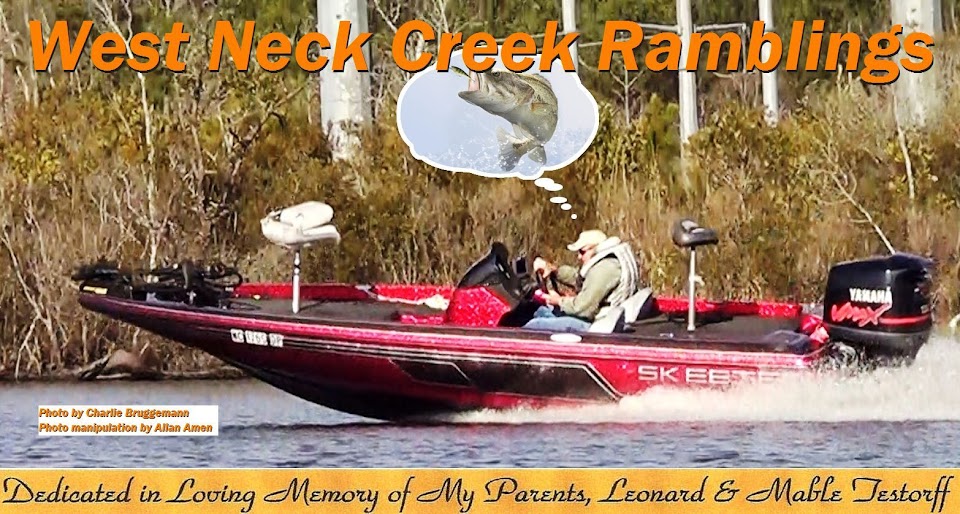I thought I knew how to pick colors for fishing lures, but after an online reading session yesterday, I'm not so sure.
My self-guidance always has been "dark colors on dark days, bright colors on bright days." I found one expert with the same understanding, but I also found one who had a bit different take on the subject. He advocated "natural, light-colored lures for clear water/sunny days, very bright or very dark lures for dirty water/cloudy days."
The latter's logic is that a bass' visibility is hampered by silt, and colors like chartreuse, yellow and orange are easier to see than bone, pumpkinseed and smoke. On the other hand, when water is clear and the fish can get an unobstructed look at the bait, it's best to go with softer, more natural colors.
The same principle applies to soft plastics. In dingy water, dense colors are the rule, and two-color worms with bright tails offer added visibility. Examples are grape, black or blue baits with chartreuse, red or orange tails. In clear water, lighter, more translucent lure colors seem to work best. Favored colors here include pumpkinseed, motor oil, strawberry, and smoke. Also, bits of metalflake molded into these see-through worms provide extra flash and attraction to bass in high-vis situations.
Preferred color combinations for the jig-and-pig are as follows: (clear water) black jig/blue trailer with either pork-chunk baits or plastic crawfish baits in black/brown and pumpkin pepper/green; (stained water) black/yellow and black/chartreuse are perennial producers.
So, now you know exactly what colors to throw the next time you hit the water...well, maybe not, as it turns out. What about all those unbelievably crazy color names assigned to hard lures and soft plastics alike today? You know what I'm talking about...names like nuclear chicken, roadkill, baby puke, scuppernong, foxy momma, chaos, green weenie, margarita mutilator, and the list goes on and on.
Although they seem random or downright silly, there is a very good reason for all these freaky colors: Bass love 'em, or maybe it's just that the fishermen love 'em. At any rate, they fly off shelves in tackle stores all across the country.
Believe it or not, there is a method to this madness. Experienced bass anglers have learned that presenting a completely new color to bass that aren't biting sometimes will turn them back on. They don't know, nor do they care to know the science behind this phenomenon. All they know and really care about is that, if it puts fish in the boat on a tough bite, it's worth having in their tacklebox, regardless of cost.
Look in any pro's box today, and you're apt to find at least a few colors not seen in nature--like hot pinks, blues, red chrome, and multi-colored lures--right alongside the standard colors. Take the lure color firetiger, for example. You'll rarely find a tacklebox without at least one crankbait in this wild, unnatural color (a mix of neon green, chartreuse, hot orange, and black stripes). It has been a go-to color for decades and produces bass as well as any naturally-colored lure.
The key to becoming a successful bass angler is to be willing to experiment with a variety of colors until you find what works best on your local waters. Start with colors that have been proven fish-getters in the past, or with colors the locals recommend, and branch out from there. Through trial and error, you'll eventually find the right pattern that unlocks the bite.




No comments:
Post a Comment